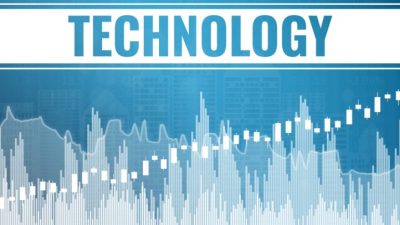In the current fast-changing financial environment,Artificial Intelligence (AI)has become a major disruptor, introducing remarkable changes to debt economics. As technological progress continues, AI is offering innovative tools and approaches that are reshaping the way debt is handled, evaluated, and comprehended. This article examines the revolutionary effect of AI on debt economics and points out important areas where it is creating substantial impact.
AI in Debt Management
Historically, managing debt has involved a time-consuming approach that is susceptible to mistakes and lacks efficiency. The use of artificial intelligence is making these procedures more efficient, providing advantages like increased precision and better choices.
1. Predictive Analytics
Artificial intelligence-driven predictive analytics is changing how companies handle debt collections. These tools examine past data to forecast upcoming patterns and how borrowers might act. Major advantages are:
- Improved risk assessment:Artificial intelligence systems can analyze extensive data sets to detect possible dangers and new patterns, supporting improved choices.
- Enhanced debt recovery:By identifying which accounts are likely to default, companies can create forward-thinking approaches to recover outstanding debts more efficiently.
2. Mechanization of Everyday Activities
Artificial intelligence is also streamlining repetitive tasks associated with managing debt, easing the workload for human staff and decreasing mistakes.
- Efficient data processing:Artificial intelligence enables the rapid processing of extensive sets of transactions and accounts, leading to quicker and more precise data management.
- Automated communication:From emails to text messages, AI can handle debtor outreach, providing prompt reminders and follow-ups for clients.
AI in Debt Financing
Another important field undergoing transformation through AI is debt financing. Through streamlining operations and improving decision-making, AI offers new methods for financing that are effective and trustworthy.
1. Enhanced Credit Scoring
Traditional credit evaluation techniques typically used restricted data sets and strict guidelines, resulting in inefficiencies and potential prejudices. AI brings about sophisticated credit scoring models that take into account a wider array of elements, providing:
- More equitable credit evaluations:Artificial intelligence systems can integrate various data sources, such as social media activity and transaction records, to offer a detailed assessment of a person’s financial reliability.
- Reduction in biases:Using a variety of data sources, AI contributes to reducing the natural biases found in conventional credit evaluation methods.
2. Automated Underwriting
Automated underwriting systems are now widely used, enhancing efficiency and precision.
- Quick processing times:Automated systems conserve time by quickly analyzing data, resulting in quicker approvals.
- Reduction in human error:Artificial intelligence minimizes mistakes in underwriting through the steady use of data-based decision-making approaches.
Data Analysis and Machine Intelligence in Government Debt Administration
Another field where AI is fostering progress is public debt, helping governments and organizations handle debt more efficiently.
1. Sovereign Debt Analysis
Authorities are utilizing artificial intelligence to assess the long-term viability of national debt and develop effective management approaches.
- Better forecasting:Artificial intelligence has the capability to detect patterns and trends in public debt, assisting decision-makers in developing more precise predictions and improved financial strategies.
- Efficient risk management:Leveraging AI-driven analysis, governments can reduce possible financial hazards and enhance approaches to managing debt payments.
2. Policy Formulation
Artificial intelligence assists decision-makers in developing policies and approaches that are consistent with economic objectives.
- Data-driven policymaking:By examining financial metrics, artificial intelligence can recommend strategies that support responsible borrowing amounts.
- Scenario analysis:Artificial intelligence enables the simulation of multiple situations, assisting decision-makers in comprehending the possible effects of various approaches.
The Role of Artificial Intelligence in Debt Economics
With the ongoing development of AI technology, its impact on debt economics is expected to grow even more. The ability of AI to enhance and simplify procedures means that both companies and governments can gain advantages. Nevertheless, it is important to address the ethical issues and prejudices linked to AI, guaranteeing its proper and responsible use.
In the years ahead, we can anticipate AI’s ongoing impact on debt economics through:
- Integration of blockchain technology:Artificial intelligence, when integrated with blockchain technology, has the potential to enhance transparency and ensure security in debt-related transactions.
- Emergence of AI-driven platforms:These services will offer thorough options for handling debt and securing financial support.
- Continuous learning and adaptation:Artificial intelligence systems will progress as data changes, growing more productive and powerful with time.
In summary, artificial intelligence is changing the field of debt economics, offering innovative solutions in multiple areas. Whether it’s through predictive analysis, automated systems, or the development of policies and risk control, the influence of AI is significant. As we adopt these developments, it’s important to use them in a responsible and ethical manner to fully harness their benefits within our economic structures.
Subscribe to keep reading
This is a post available only to subscribers. Become a subscriber to gain access to the rest of this content and other exclusive material.












